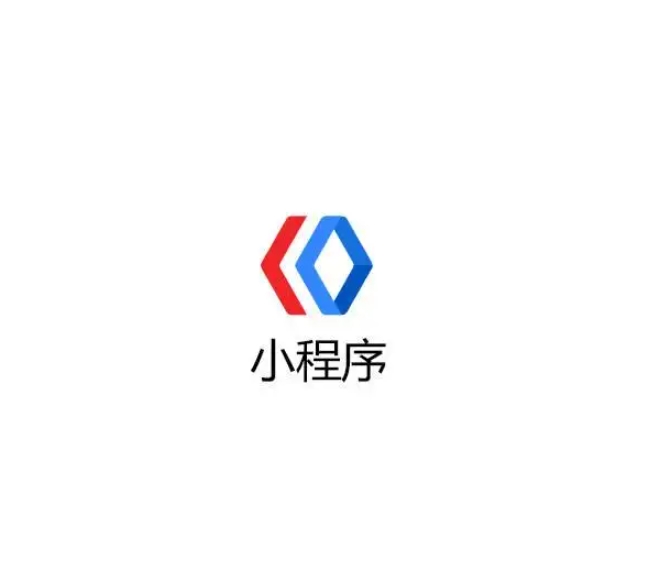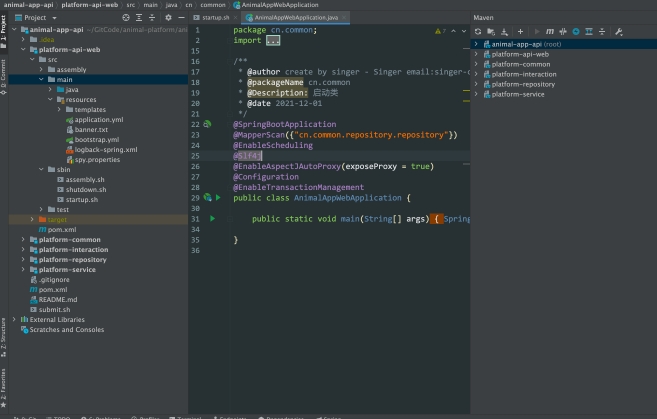How to Develop a Successful Baidu Mini Program: Technical Architecture and Best Practices
- latest articles
- 1.DApp Development & Customization: Merging Diverse Market Needs with User Experience 2.Analysis of the Core Technical System in DApp Project Development 3.How to achieve cross-chain interoperability in Web3 projects? 4.How does the tokenization of points reconstruct the e-commerce ecosystem? 5.How to Set and Track Data Metrics for a Points Mall? 6.What is DApp Development? Core Concepts and Technical Analysis 7.Inventory of commonly used Web3 development tools and usage tips 8.Development of a Distribution System Integrated with Social E-commerce 9.Six Key Steps for Businesses to Build a Points Mall System 10.What is DApp Development? A Comprehensive Guide from Concept to Implementation
- Popular Articles
- 1.Future Trends and Technology Predictions for APP Development in 2025 2.Analysis of the DeFi Ecosystem: How Developers Can Participate in Decentralized Finance Innovation 3.From Zero to One: How PI Mall Revolutionizes the Traditional E-commerce Model 4.DAPP Development | Best Practices for Professional Customization and Rapid Launch 5.Recommended by the Web3 developer community: the most noteworthy forums and resources 6.From Cloud Computing to Computing Power Leasing: Building a Flexible and Scalable Computing Resource Platform 7.Shared Bike System APP: The Convenient Choice in the Era of Smart Travel 8.How to Develop a Successful Douyin Mini Program: Technical Architecture and Best Practices 9.How to Create a Successful Dating App: From Needs Analysis to User Experience Design 10.From Design to Development: The Complete Process of Bringing an APP Idea to Life
With the rapid development of the mini-program ecosystem, Baidu, as a leading search engine platform in China, has launched its own mini-program development platform. Baidu Mini Programs not only inherit the lightweight and convenient characteristics of traditional mini-programs but also leverage Baidu's powerful search, artificial intelligence (AI), and big data capabilities to provide developers with more diverse technical tools and solutions. Whether for individual developers or businesses, Baidu Mini Programs have become an important platform for expanding traffic and improving operational efficiency.
For developers, standing out in the Baidu Mini Program ecosystem, innovating in technical architecture design, and improving development efficiency and application experience through best practices have become core issues in building successful mini-programs. This article will delve into how to develop a successful Baidu Mini Program, from technical architecture to best practices, providing developers with a comprehensive development guide.
I. Overview and Features of Baidu Mini Programs
Baidu Mini Programs are a new type of application launched by Baidu. Developers can quickly build applications through the Baidu Smart Mini Program platform and display them within the Baidu ecosystem, such as Baidu Search, Baidu Tieba, and Baidu Maps. The advantages of Baidu Mini Programs lie in their rich scenario-based access, powerful search traffic, and the empowerment of Baidu's AI and big data technologies.

Core Advantages of Baidu Mini Programs:
Quick Access and Lightweight: Users do not need to download or install anything; they can directly access the mini-program by opening Baidu Search, Baidu Tieba, Baidu Maps, or other applications, avoiding the download and installation process of traditional apps.
Powerful Search Traffic Support: Baidu Mini Programs can directly gain traffic through the Baidu search engine, and developers can increase exposure by optimizing the mini-program content.
Deep Integration of AI and Big Data: Baidu Mini Programs can utilize Baidu's artificial intelligence technology to provide various functions such as intelligent recommendations, voice recognition, and image recognition, enhancing the user experience.
Multi-Scenario Access: Baidu Mini Programs can not only be accessed within the Baidu App but can also be embedded in other partner platforms and Baidu series products, expanding the usage scenarios.
II. Development Process of Baidu Mini Programs
2.1 Registration and Creating a Mini-Program
Developers first need to register on the Baidu Developer Platform to create a Baidu Mini Program. The entire process includes the following steps:
Create a Developer Account: Go to the Baidu Open Platform (https://smartprogram.baidu.com/), log in with a Baidu account, and apply to become a developer.
Create an Application: Click "Create Mini Program" and fill in the basic information, select the application type for the mini-program, and obtain the App ID.
Configure the Development Environment: Install the development tools provided by Baidu, including the Baidu Mini Program IDE tool, for writing and debugging code. This tool supports real-time preview and debugging, allowing developers to quickly view the application effects.
2.2 Development Technology Stack for Baidu Mini Programs
The technology stack for Baidu Mini Programs is similar to that of other mini-program platforms, based on core front-end development technologies: HTML, CSS, and JavaScript. Baidu Mini Programs use their own development framework, which mainly consists of the following three parts:
WXML (WeiXin Markup Language): A markup language used to build the page structure, similar to HTML, for displaying interface content.
WXSS (WeiXin Style Sheets): Similar to CSS, responsible for defining page styles, including colors, fonts, layout, etc.
JavaScript: Used to handle page interactions and logic, managing user behavior and business data.
Developers can use these languages to implement page display, interaction logic, data acquisition, and display functions. Baidu Mini Programs also support data interaction with the backend, typically using API interfaces for data transmission.

2.3 Technical Architecture of Baidu Mini Programs
A typical Baidu Mini Program architecture consists of the following core components:
Frontend: Responsible for interface display and user interaction, primarily implemented using WXML and WXSS languages. The frontend can retrieve data transmitted from the backend and process interactions via JavaScript.
Backend: Responsible for handling user requests and providing data support. Backend servers typically use common web development technologies such as Node.js, PHP, Java, etc.
API Interfaces: The frontend and backend communicate via RESTful APIs or GraphQL to ensure real-time data updates and interactions.
Baidu Cloud Services: Baidu Mini Programs can leverage various Baidu Cloud services, such as object storage, databases, and AI services, to enhance the functionality and performance of the mini-program.
III. Best Development Practices for Baidu Mini Programs
To ensure the development of high-quality Baidu Mini Programs, developers should follow some best practices during the construction of the application to improve its stability, user experience, and maintainability.
3.1 Interface Design and User Experience Optimization
As lightweight applications, the interface design and user experience of mini-programs are crucial. Developers need to ensure that the mini-program meets user needs in both visual and interactive aspects.
Simple and Intuitive UI Design: The design of the mini-program should be as simple as possible, avoiding excessive functionality. Interface elements should be clearly arranged so that users can quickly find the functions they need.
Smooth Interactive Experience: Use smooth animation effects and responsive design to enhance the interactive experience, ensuring timely and accurate feedback after user operations.
Multi-Device Adaptation: Baidu Mini Programs need to be compatible with various devices, so design considerations should include different device resolutions and screen sizes, using flexible layout designs.
3.2 Performance Optimization and Loading Speed
The loading speed of a mini-program directly affects user retention and experience. Developers should focus on the following aspects:
Resource Optimization: Reduce the number of resources required for page loading, merge CSS and JavaScript files as much as possible, and minimize HTTP requests.
Image Compression and Format Optimization: Ensure images are appropriately sized, choose suitable formats such as WebP or JPG, and compress them to speed up loading.
Lazy Loading Technology: For resources that do not need to be loaded immediately on the page, use lazy loading, loading them only when the user needs them, to improve the initial screen loading speed.
3.3 Data Management and Interface Design
Baidu Mini Programs require extensive data interaction with backend servers, making reasonable data management and interface design crucial.
Interface Optimization: Use RESTful APIs or GraphQL for data transmission to ensure the simplicity and efficiency of the interfaces.
Caching Mechanism: Reasonably use caching mechanisms in the mini-program to reduce unnecessary network requests and improve response speed.
Data Security: Use encryption technology to protect user data and prevent data leaks. Especially when involving user privacy or payment functions, pay special attention to the secure transmission of data.
3.4 Security of Mini-Programs
The security of Baidu Mini Programs is a factor that cannot be ignored during development, especially when it involves sensitive operations such as payments and user information processing. Developers should ensure:
Data Encryption: All user-related data transmissions should be encrypted, such as using the HTTPS protocol to protect data security.
Permission Management: Strictly limit the permissions of the mini-program to ensure it only accesses necessary data and does not leak user privacy.
Review and Compliance: Ensure the content of the mini-program complies with Baidu's review requirements and national regulations to avoid removal due to violations.
3.5 Commercialization and Traffic Monetization
Baidu Mini Programs not only provide a platform for developers to showcase but also enable monetization through Baidu's traffic. Here are some common commercialization models:
Ad Placement: Baidu Mini Programs support embedding ads within the application, and developers can place ads through the Baidu advertising platform.
E-commerce and Transactions: Developers can integrate products or services into the mini-program to enable direct e-commerce transactions.
Membership Subscriptions and Paid Features: For content platforms or service-oriented applications, monetization can be achieved through membership subscriptions or paid features.
IV. Summary
As an innovative lightweight application platform, Baidu Mini Programs not only provide a fast and convenient user experience but also greatly expand developers' application scenarios by leveraging Baidu's powerful search traffic and AI technology. Successful development of Baidu Mini Programs requires not only mastering the basic technical architecture and development process but also following best practices to optimize user experience and enhance performance.
By carefully designing the user interface, optimizing performance, reasonably managing data interfaces, and focusing on the security of the mini-program, developers can build high-quality Baidu Mini Programs that meet user needs and stand out in the competitive market.
-

How to Use App Development to Boost Conversion Rates on E-commerce Platforms
With the widespread adoption of smartphones and the rapid development of mobile ···
-

How APP Development Facilitates Digital Transformation and Innovation
With the rapid advancement of information technology, digital transformation has···
-

App Store Optimization and SEO Strategies in App Development
In today's rapidly evolving mobile internet landscape, apps have become essentia···

 Blockchain
Blockchain










